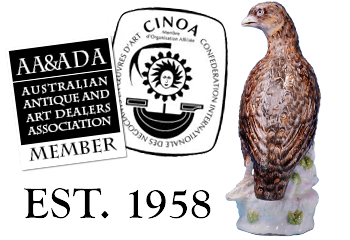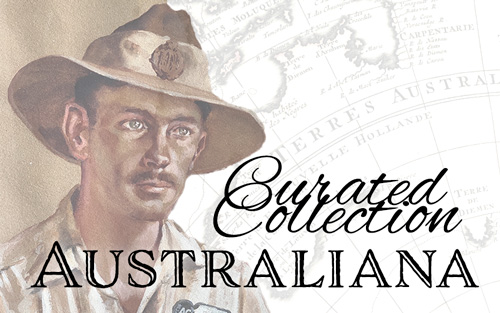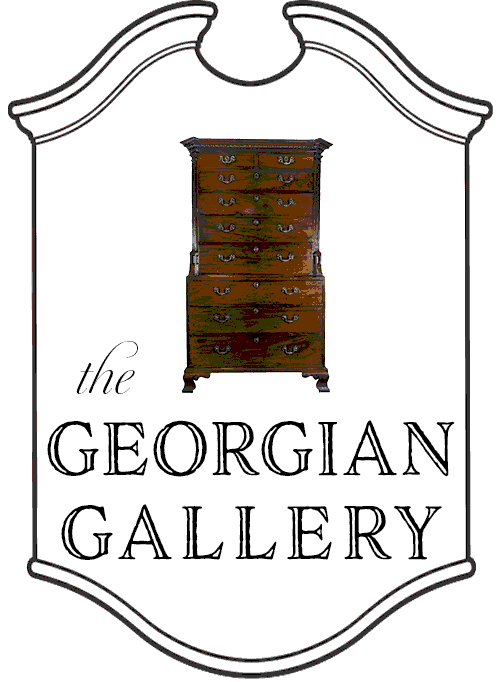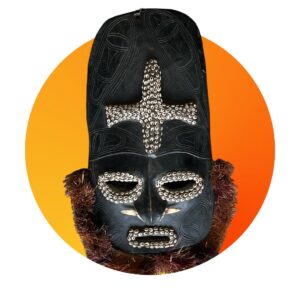‘New Canton’ began producing ‘soft-paste’ porcelain near the village of Stratford-le-Bow, east London, in around 1748. They imitated the Chinese Export ‘hard-paste’ porcelains that were so in-demand at that period.
There was an earlier patent for porcelain taken out in 1744 by Edward Heylyn and Thomas Frye, and a small group of items – some marked with an ‘A’ and therefore known as ‘A-mark’ – have been attributed to this earlier effort.
Frye took out his further patent in 1748, and began commercial production of items characterised by a dense body with a ‘greasy’ looking glaze and bright blue cobalt or colourful enamels.
Around 1755 there is a change in the body to a lighter ‘floury’ body.
Translucency can be quite clear, mostly with a brownish tinge.
Marks are not always found, but include mock-Chinese characters, numbers, ‘workman’s marks’, and occasionally crossed swords copying Meissen.
The factory struggled with sales and quality in the early 1770’s, closing in 1776.
Years active: c.1775 – c.1799
Location: Broseley, Shropshire, England
Founded by Ambrose Gallimore and Thomas Turner, Caughley porcelain works was a producer of fine tea-wares and and serverware that was often compared to the likes of Worcester. Throughout the factory’s operational years, it found its niche in producing mostly blue printed and painted wares, often gilt by Chamberlains of Worcester; aimed towards the growing English middle-class in late 18th Century England.
In 1799, the company was incorporated into the Coalport / Coalbrookdale manufactory just down the road.

Keeling is a fascinating small factory that was only positively identified in the late 1990’s. The wares are often in the Chinese Export style, of which the best known manufacturer is Newhall.
In the 1970’s was given the placeholder ‘Factory X’ name until it could be attributed to a known manufacturer. Alongside it were two other Newhall-type manufacturers, Factory ‘Y’ and ‘Z’.
Current research has revealed ‘X’ is in fact A & E Keeling, ‘Y’ is still an unknown smaller maker from circa 1790-1800, and ‘Z’ is Thomas Wolf & Co.
Anthony Keeling (1738-1815) was a Tunstall, Staffordshire, potter. He married Ann, the daughter of well-known potter Enoch Booth, and built the original Phoenix Works in Tunstall. His earlier wares are recorded as being Queensware, Black Basalt, but not porcelain. He had, however been a part of the partnership of Hollins, Warburton & Co, who had purchased the rights to make hard-paste porcelain from Champion of Bristol in 1781; however, he was once of the disgruntled members who withdrew. By 1792, when he is recorded at Hanley, Staffordshire, Porcelain manufacturing is in full swing. Records from the Wedgwood Archives reveal he was buying his raw materials from Wedgwood – the China Clay and China Stone necessary for a hard-paste porcelain mix.
Production period can be defined as beginning circa 1784, at Tunstall, and ending circa 1807 in Hanley.
The highest patten number recorded is 426, and over 300 patterns have been discovered, with around half having a pattern number associated.
There is one definitive book on the subject for further reading:


Jean Barratt “A&E Keeling – Formerly Factory X. – Shapes and Patterns on Porcelain, Gomer Press, Wales, 2009
ISBN 978-989-20-1816-4









